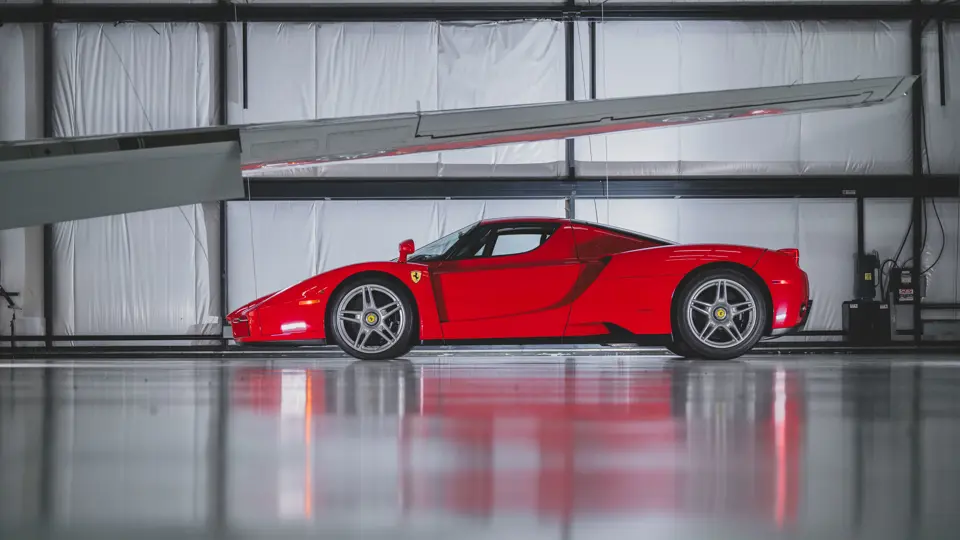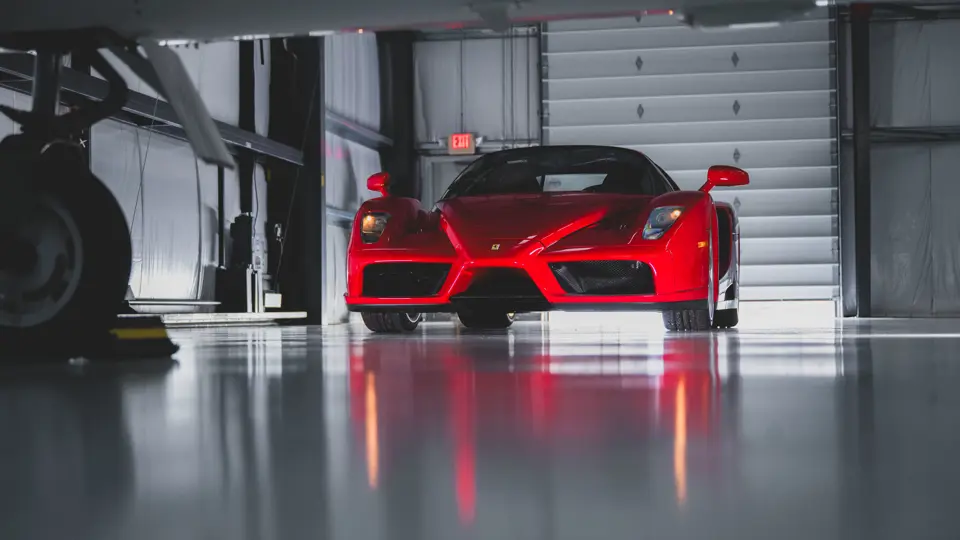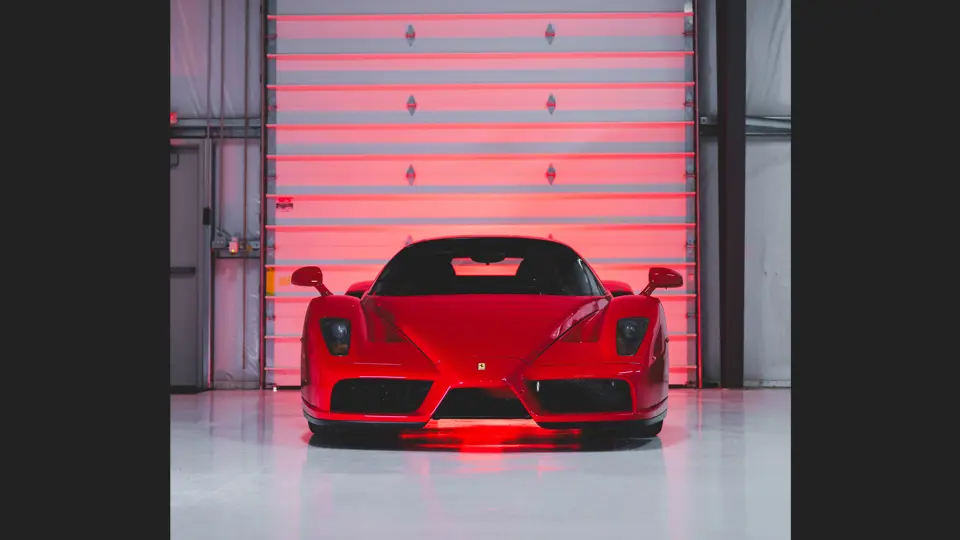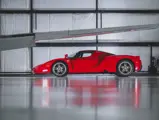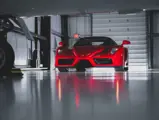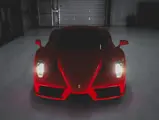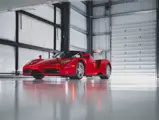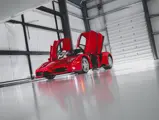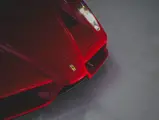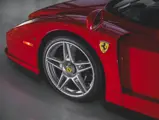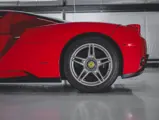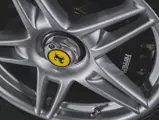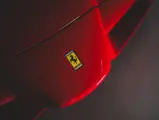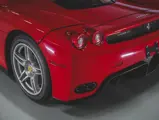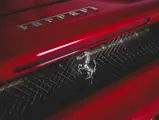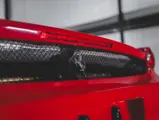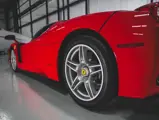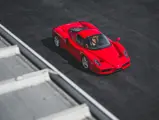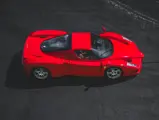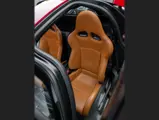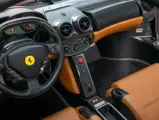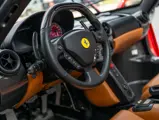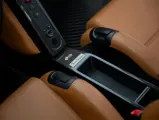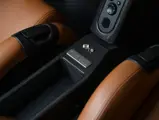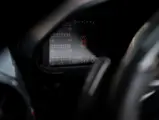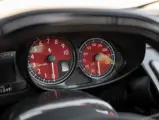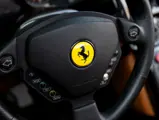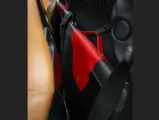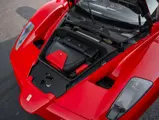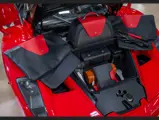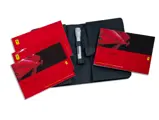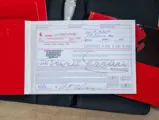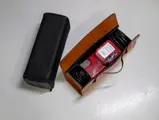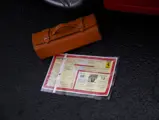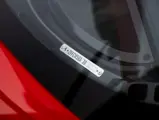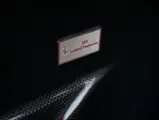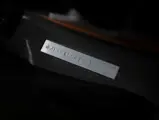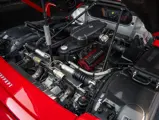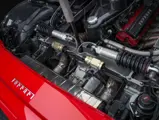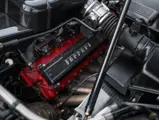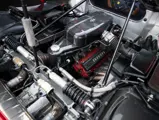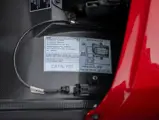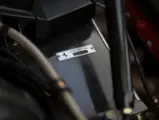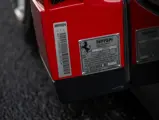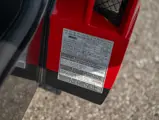
2003 Ferrari Enzo
{{lr.item.text}}
{{bidding.lot.reserveStatusFormatted}}
- One of just five US-spec examples finished in Rosso Corsa over Natural leather
- One of 111 examples specified for the US market in total; and of 498 examples built overall
- Benefits from a minimal ownership chain of just two private caretakers, including nearly 20 years of initial ownership by the late collector and renowned two-time Pebble Beach winner Robert M. Lee
- Bellwether example displaying near-showroom condition, including extremely low mileage of just 1,049 miles
- Offered with owner’s manual, toolkit, fitted luggage, and battery charger in leather container
- Documented with original window sticker, warranty book, and history report by marque expert Marcel Massini
- Exquisite example of Ferrari’s seminal “Big Six” hypercars (288 GTO, F40, F50, Enzo, LaFerrari, F80)
THE ULTIMATE HYPERCAR FOR A NEW MILLENIUM
If one manufacturer can claim to have created the definitive mold for the evolution of modern hypercars, it must be Ferrari. From the competition-bred 288 GTO and F40 of the late 1980s, through the voluptuous F50 of the 1990s, Ferrari combined unparalleled performance and breathtaking designs to build small batches of impeccable road machines for ultra-exclusive clientele. These were undeniably some of the most formidable production sports cars ever built, and they remain so to this day.
After F50 production concluded in 1998, tifosi dreamt of what exotic top-shelf speed machine Maranello might devise next—and what form it would take. Speculation was rampant over whether the eventual F50 successor would employ a rear-mounted V-8 or V-12, and if the packaging would be spartan and purposeful like the F40, or luxurious and evocative of vintage designs like the F50.
In mid-2002, Ferrari president Luca di Montezemolo revealed the answer with the introduction of the forthcoming Ferrari Enzo. Though the model’s name required no explanation, he reasoned that after Ferrari had named cars for historically important locales like Maranello and Modena, the time had finally come to honor the company’s founder. He also clarified that the new model would have a strong connection to Formula 1 racing, as the manufacturer had just won the 1999 and 2000 Manufacturers’ Championship, and the 2000 Drivers’ Championship. Michael Schumacher was, in fact, just getting started on his historic dominance of Formula 1, a still unequaled feat of five consecutive championships.
Formally debuting at the 2002 Paris Motor Show, the Ferrari Enzo certainly delivered on the premise of its design brief. Like a Formula 1 car, the Enzo utilized futuristic materials to achieve maximum weight savings, with a foundational chassis tub made of carbon fiber and Nomex honeycomb weighing just 200 pounds. Aluminum sub-frames were then mounted on the tub, and these laid the groundwork for the attachment of unique Pininfarina-designed bodywork.
Penned by designer Ken Okuyama, the Enzo’s external styling mimicked the shape of an open-wheel racecar, though as if wrapped in a skin extending over the fenders and cockpit. Aerodynamically perfected in Pininfarina’s wind tunnel, the body was comprised of panels woven from carbon fiber and Kevlar. Nineteen-inch alloy wheels anchored by 15-inch Brembo carbon-ceramic disc brakes, and unique scissor doors, respectively completed the Enzo’s chassis and cabin, finishing a car that was highly technological and endlessly fascinating.
Into this phenomenal monocoque marriage of chassis and body, a new purpose-built engine was placed behind the driver, continuing the manufacturer’s long-running configuration for sports prototypes and hypercars. The concurrent 90-degree V-8 was essentially extended by two cylinders on each side and altered in angle, creating the 65-degree Tipo F140B V-12 engine. Displacing almost six liters, the F140 was the largest engine built by Maranello since the 712 Can-Am racecar of the 1970s. It was packed with racing components such as Nikasil-lined cylinder walls, titanium connecting rods, and a telescoping intake manifold designed to boost torque, ultimately developing 651 horsepower and 485 pound-feet of torque, earth-shattering metrics even by today’s standards. Various evolutions of the F140 would go on to power the 599 series, the F12 Berlinetta, and LaFerrari.
With power transmitted via a six-speed dual-clutch transaxle that was actuated with column-mounted paddle-shifters, the Enzo could reach 60 mph from standstill in just 3.3 seconds and a top speed of 218 mph, setting a new standard for sports car performance. Production was initially proposed to be capped at 399 units until overwhelming customer demand eventually prompted the build of 498 cars, which was still sufficiently minimal to ensure the model’s exquisite engineering was matched by its rarity. As unique and captivating today as it was upon its 2002 introduction, the Ferrari Enzo continues to hold considerable sway with collectors and supercar enthusiasts. The seminal model was undeniably Maranello’s defining millennial hypercar, serving as the genetic link between the sensuous F50 and the hybrid-powered LaFerrari.
A PEBBLE BEACH WINNER’S LOW-MILEAGE ENZO
Displaying an impressive level of originality that is encapsulated by desirably low mileage, this benchmark example of Ferrari’s groundbreaking hypercar is one of the finest Enzos ever to be publicly offered. Specified for the US market, chassis number 132333 was built in March 2003, and it is understood to be one of just five US-specification cars that were finished in Rosso and trimmed with Natural leather seats and dashboard trim. An original window sticker on file and the car’s warranty book demonstrate that the Enzo was officially retailed through Ferrari of San Francisco in Mill Valley, California, with an impressive total MSRP of $657,660—equivalent to over $1.1 million today after adjusting for inflation.
As corroborated by a history report by marque expert Marcel Massini, this breathtaking Enzo was purchased new by one of America’s foremost collectors, the late Robert M. Lee of Sparks, Nevada. As a two-time winner of the Pebble Beach Concours d’Elegance’s Best of Show award, Bob Lee was a nuanced and dedicated collector with a penchant for Ferraris, and this beautiful Enzo surely enjoyed the company of some of the world’s most distinguished and historically significant models while residing in his collection.
A Carfax on file demonstrates that the Ferrari was driven very sparingly over the next 20 years, showing only minimal increases in mileage. By October 2014, the odometer displayed just 991 miles, which is the lion’s share of mileage shown today. Following Mr. Lee’s passing in 2016, some pieces from his collection were soon offered, and the Enzo was eventually sold while displaying nearly the entirety of its current ultra-low mileage figure of 1,049 miles. As the new caretaker acquired the car strictly as an alternate asset class investment during an uncertain economy, the Enzo has remained undriven in an RM Sotheby’s storage facility ever since. In terms of actual use, for all intents and purposes, the Ferrari is a one-owner car.
Currently displaying just 1,049 miles, the Enzo abounds in a showroom quality that is commensurate with so little use while being garaged in one of the world’s best-known and most respected collections. In addition to its hyper-rare interior livery of Natural leather seats, the Ferrari is desirably accompanied by a proper set of fitted luggage and documented with the original window sticker, further cementing the car’s overwhelmingly original and well-optioned presentation. Ferrari purists and supercar collectors searching for pristine low-mileage examples of Ferrari’s “Big Six” hypercars need look no further than this extraordinary Enzo.
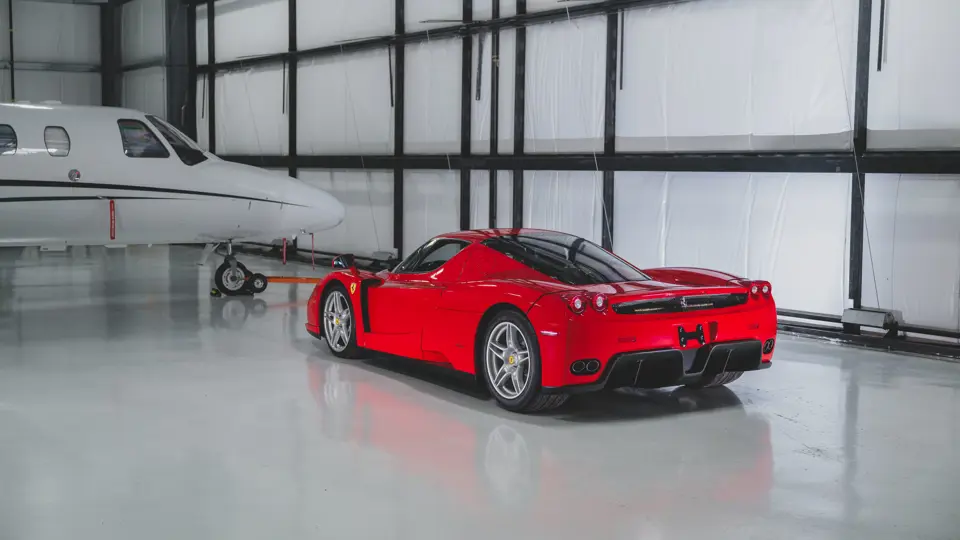
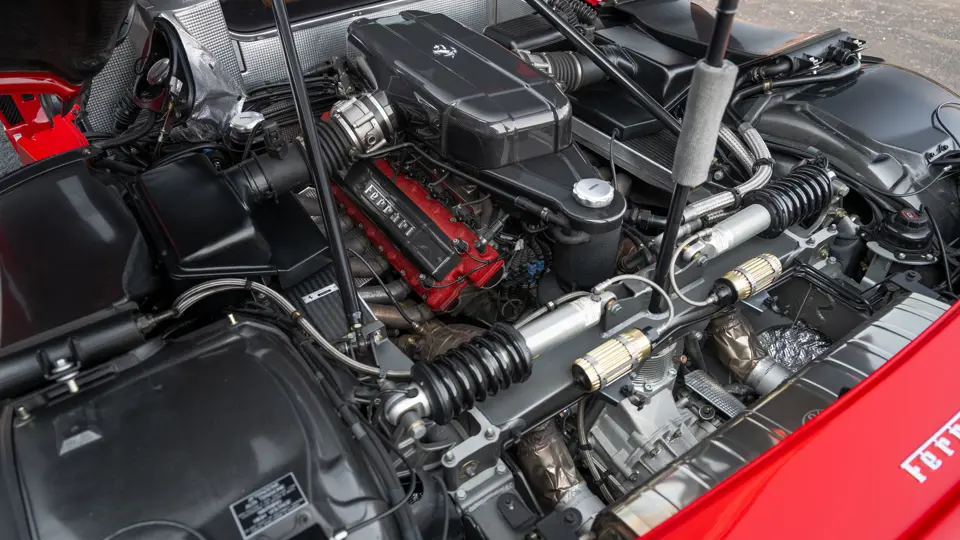


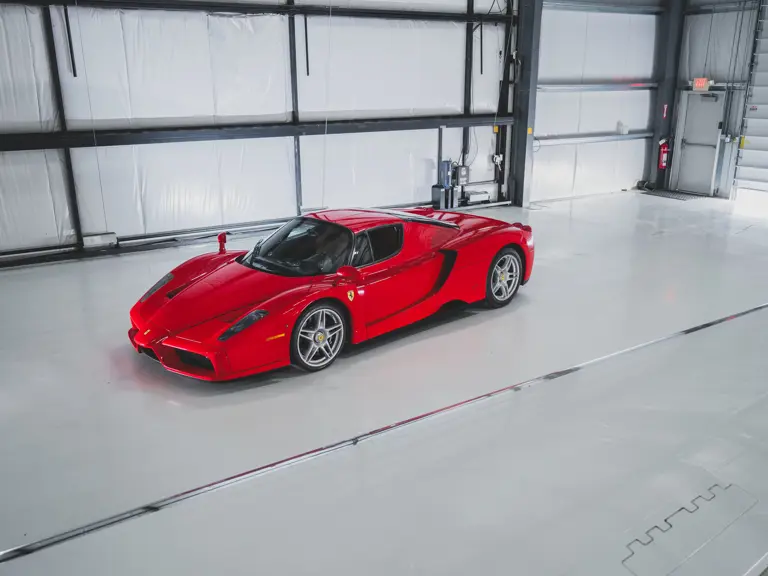
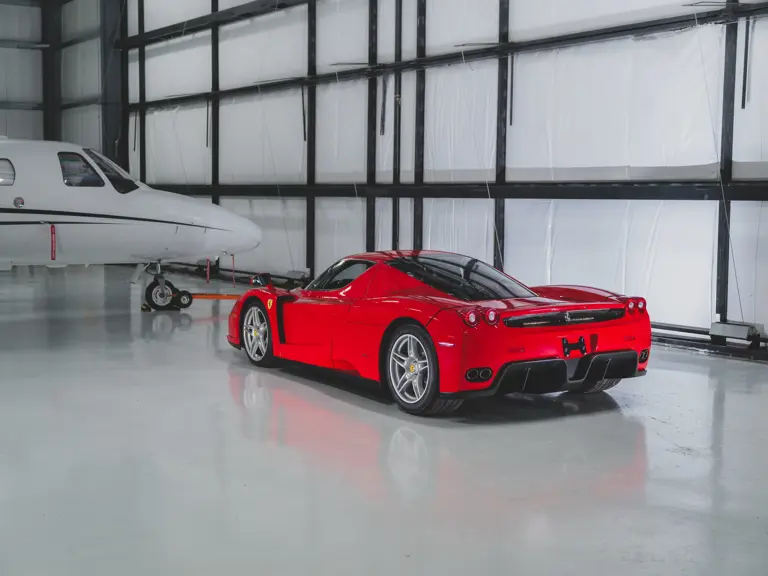
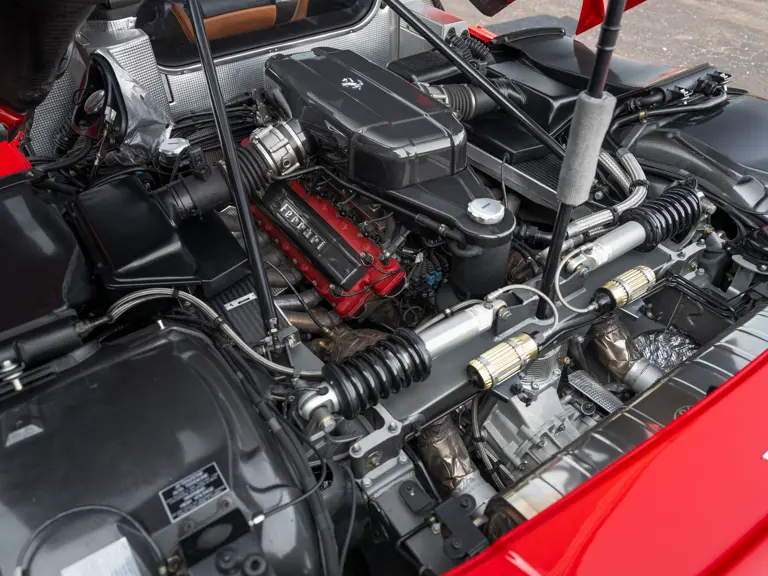

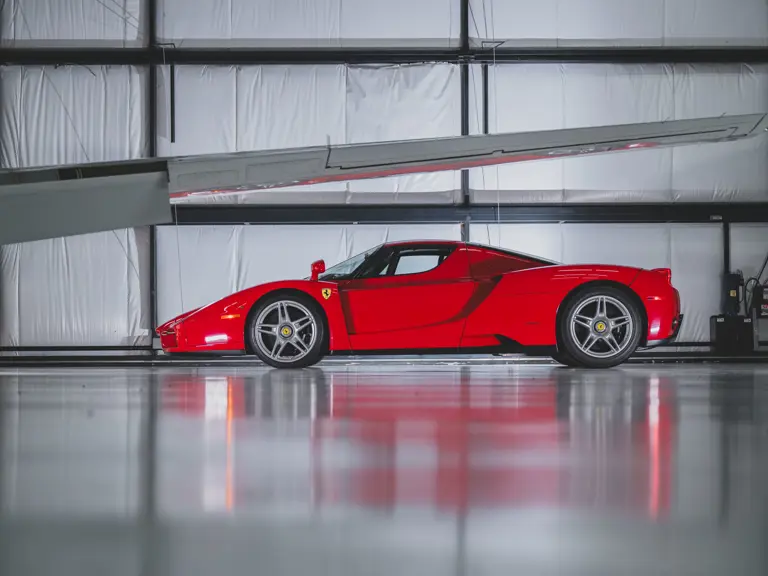
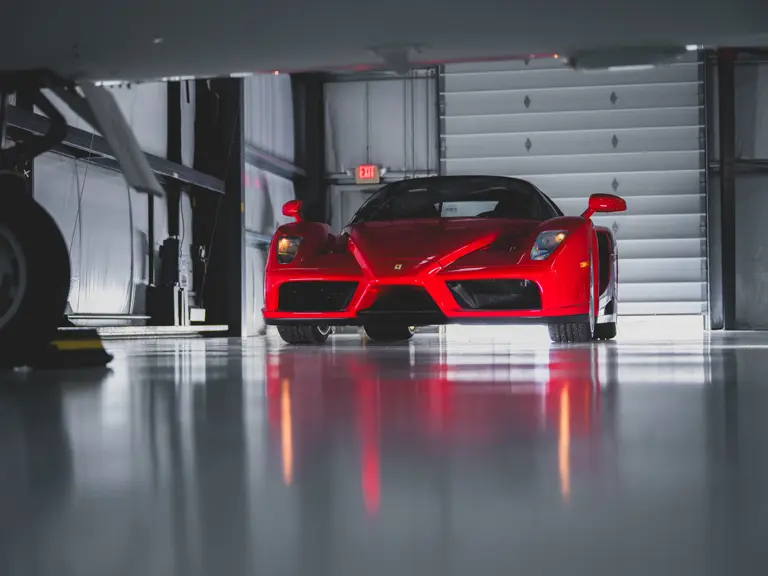
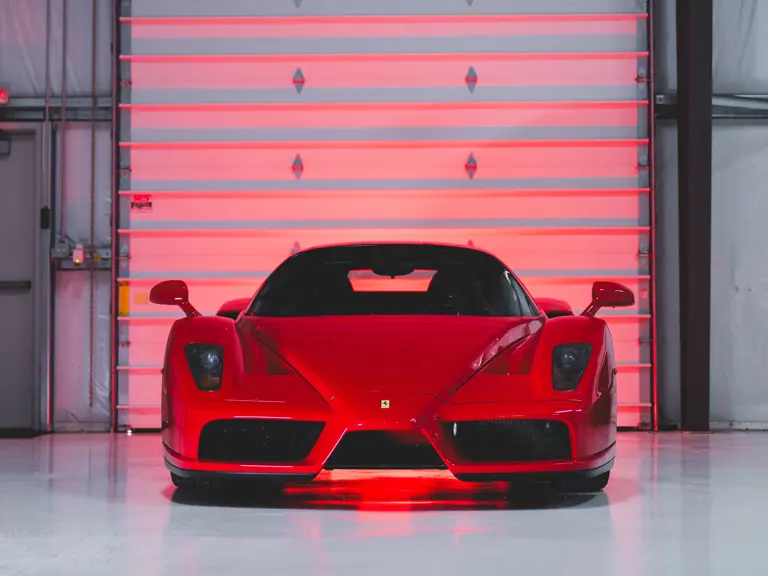

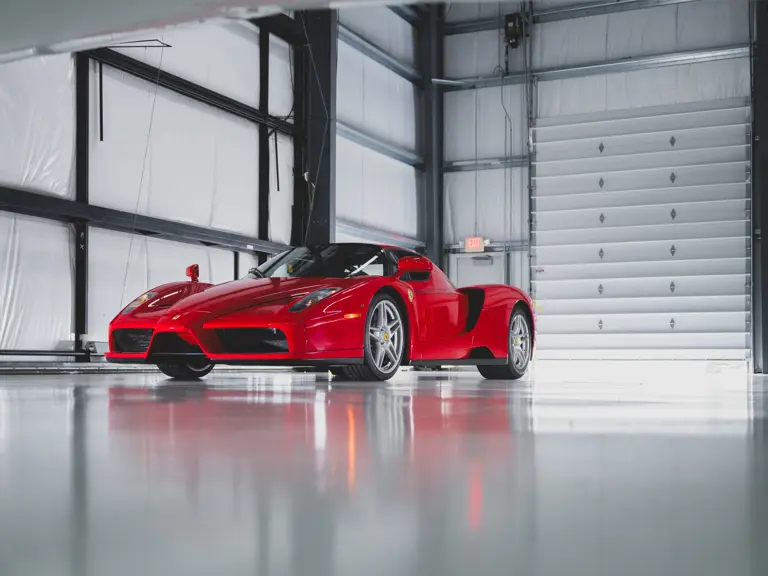
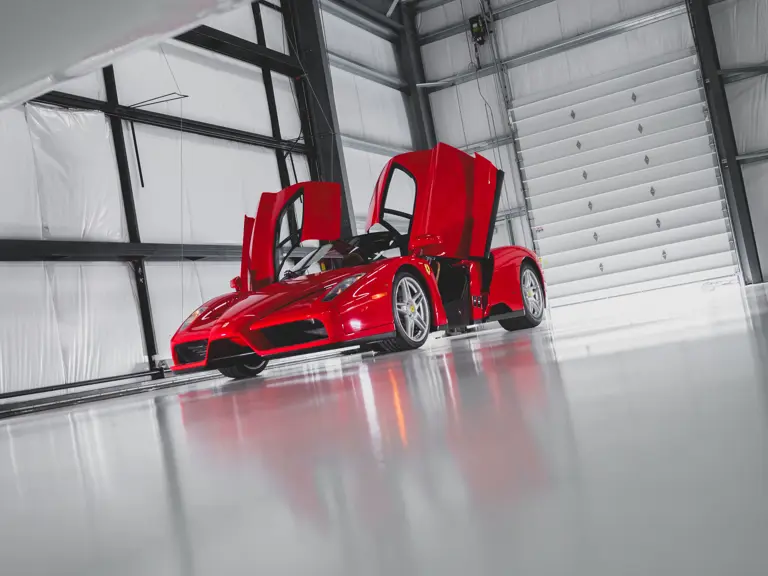
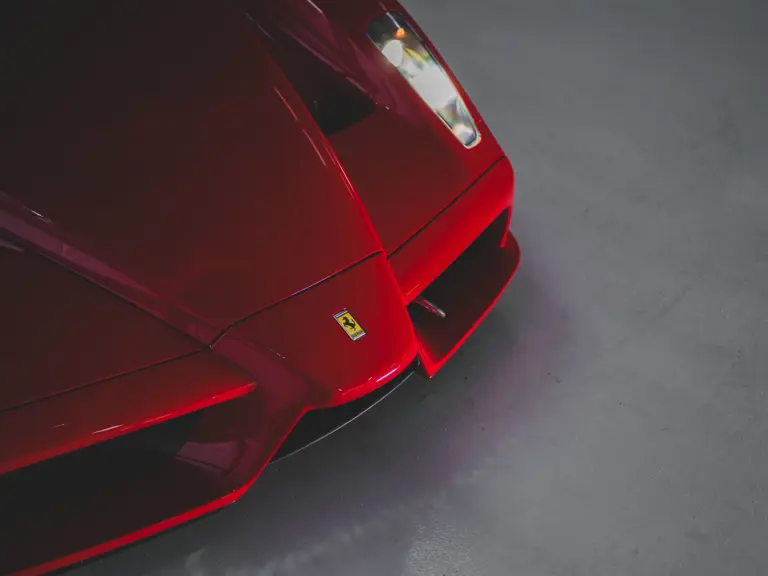
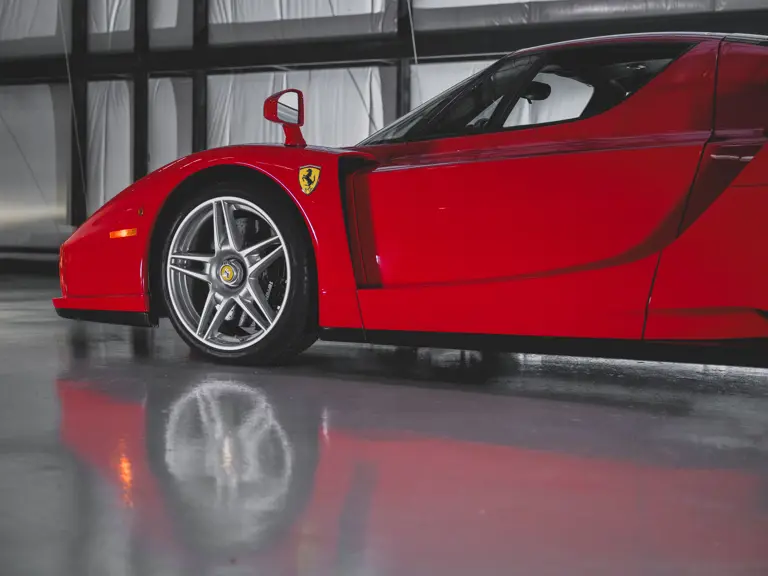
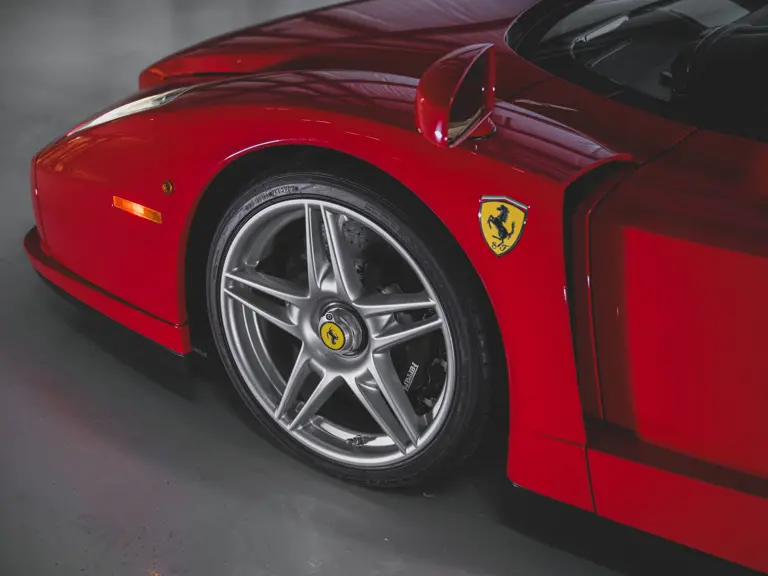
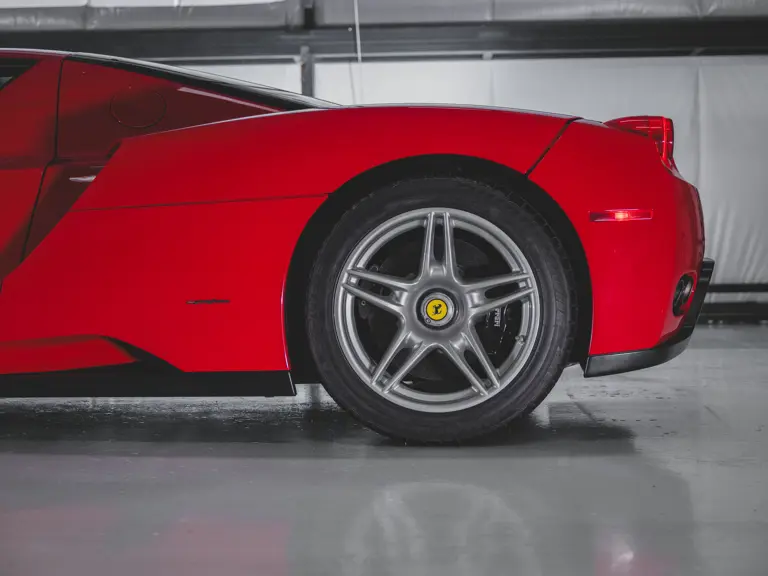
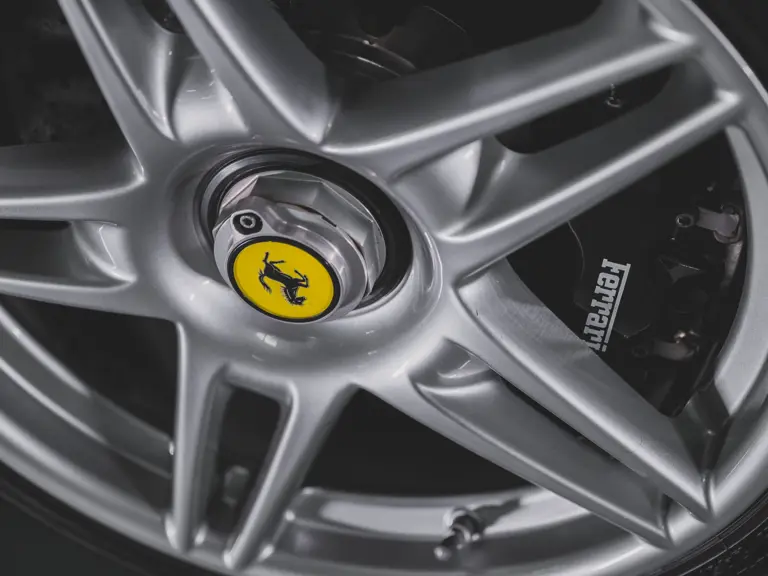

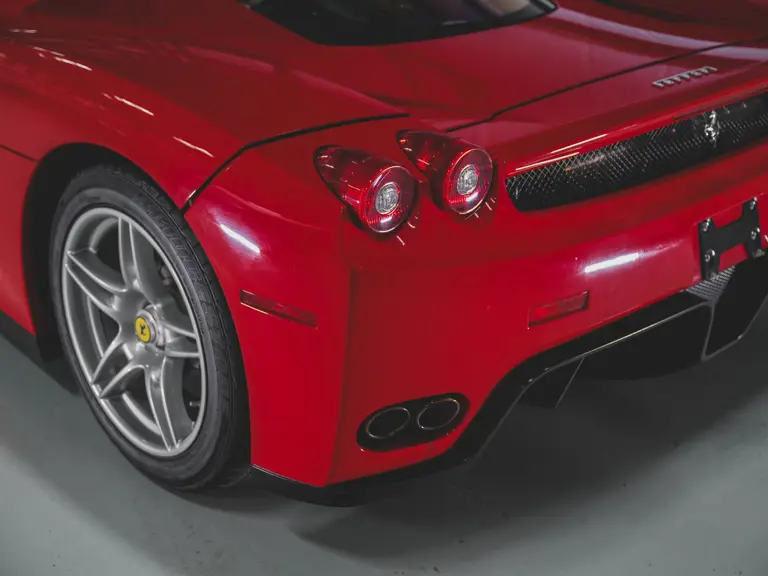
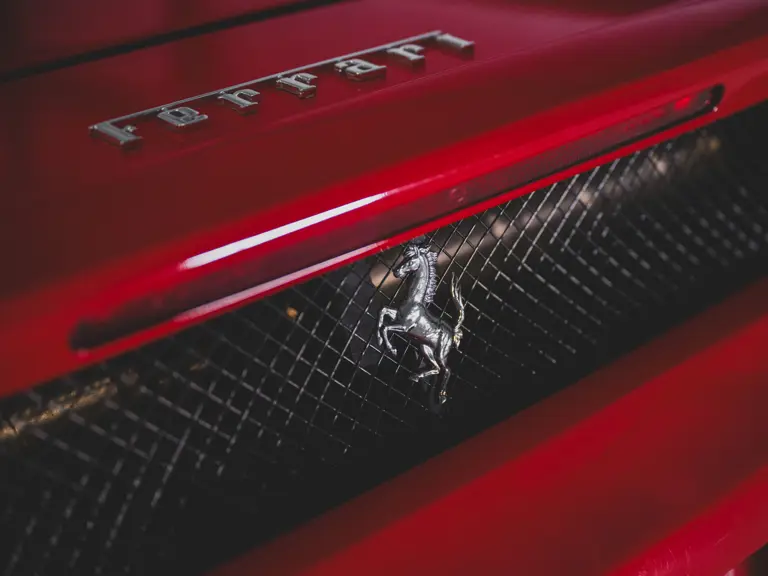
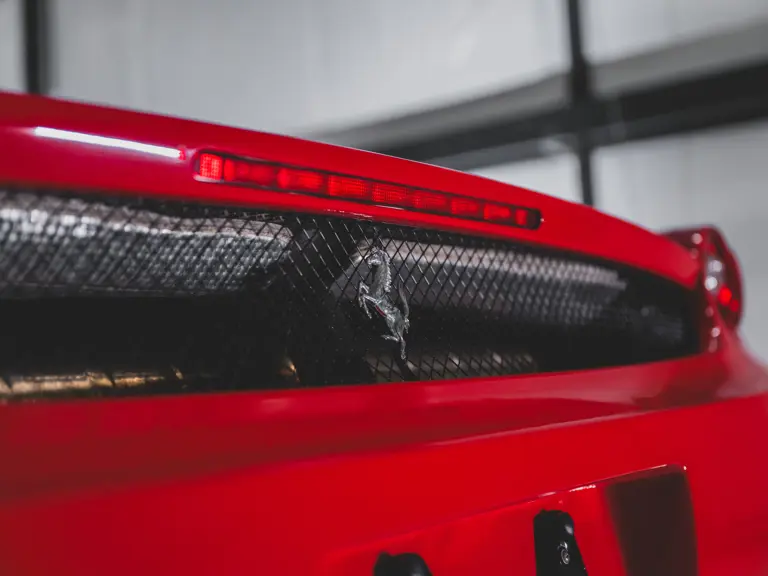
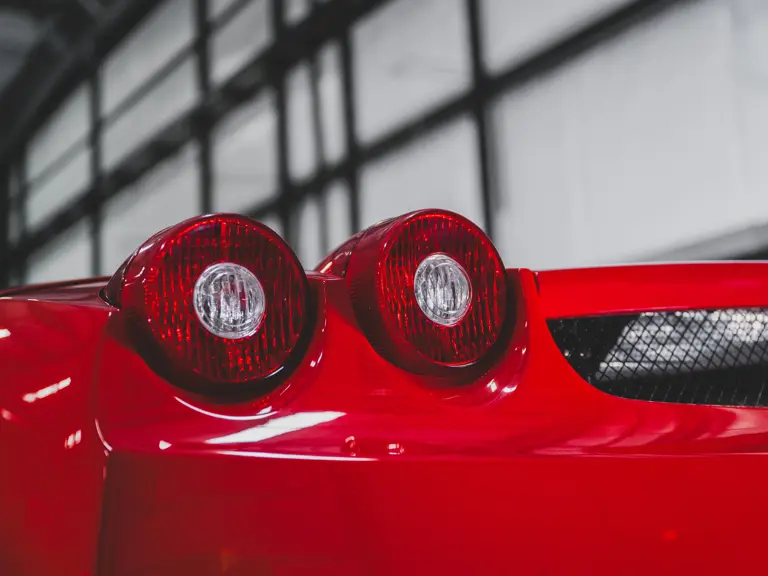
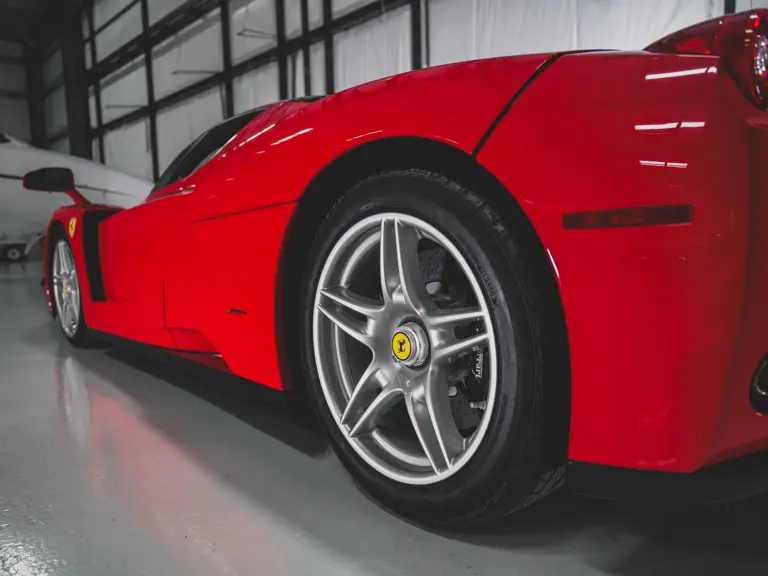
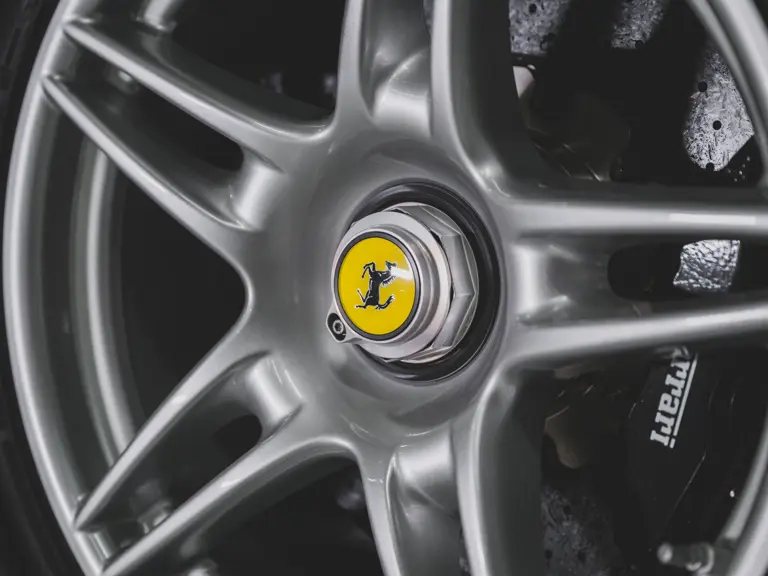
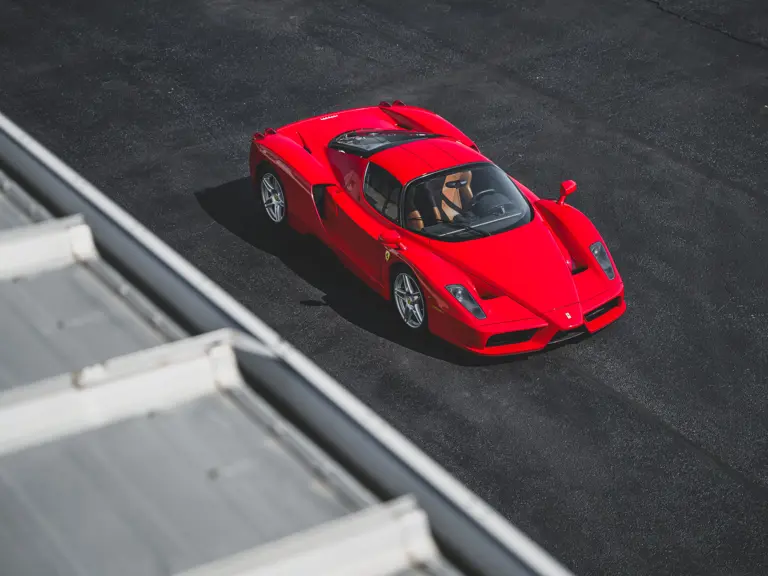

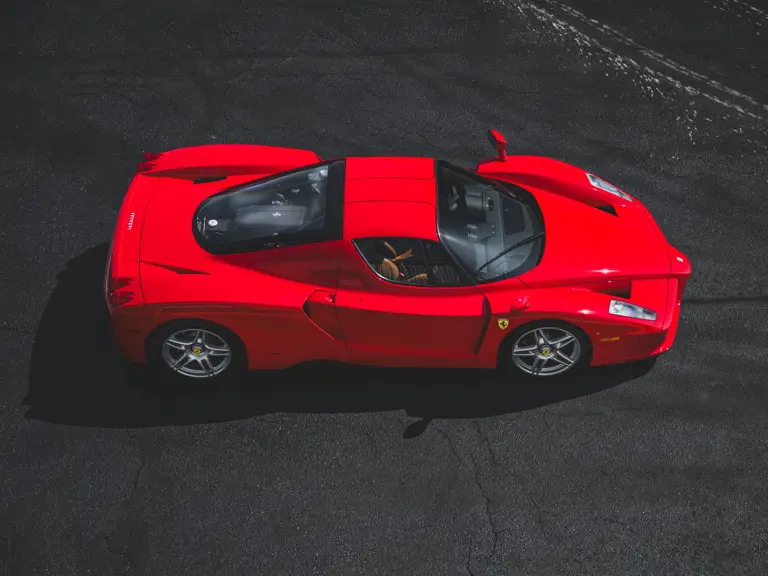
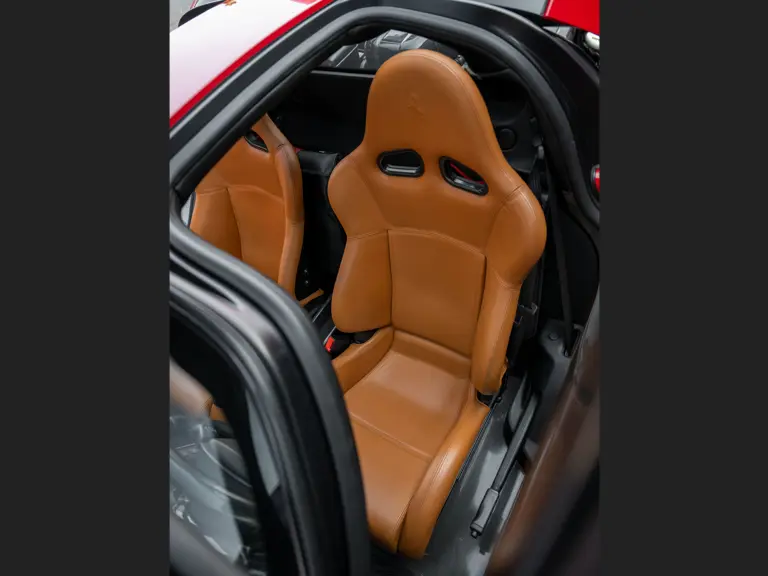
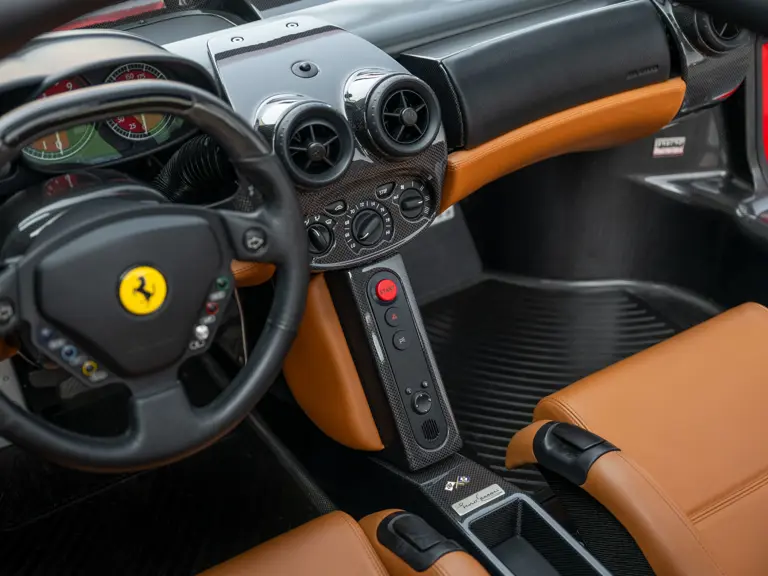

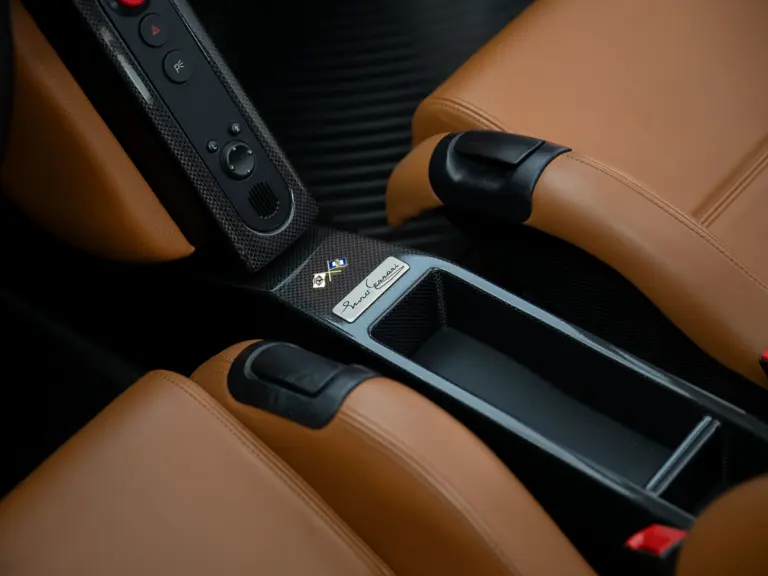
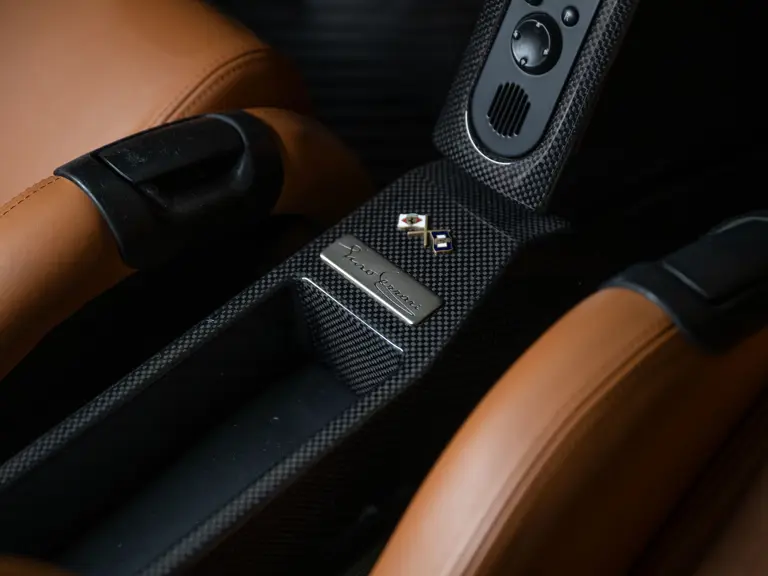
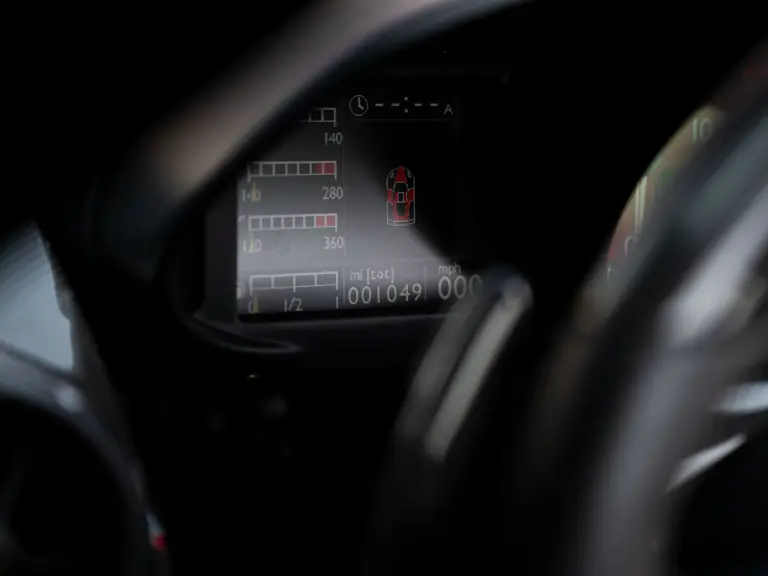
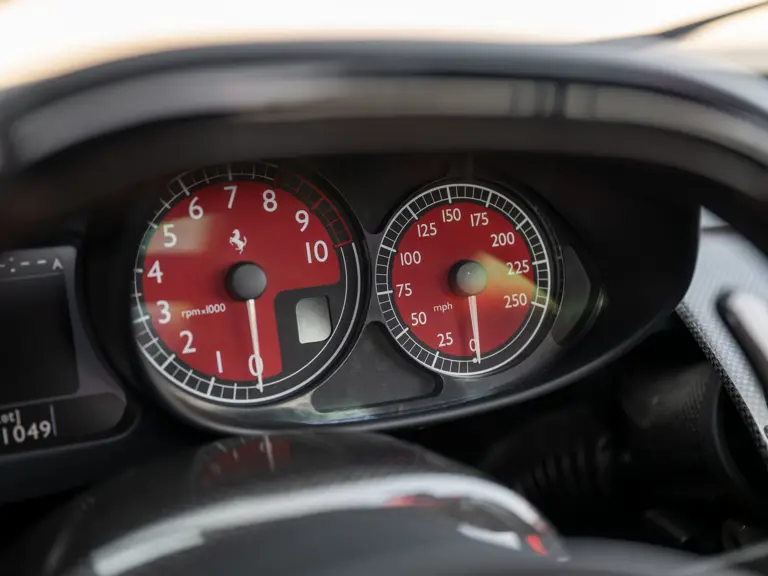
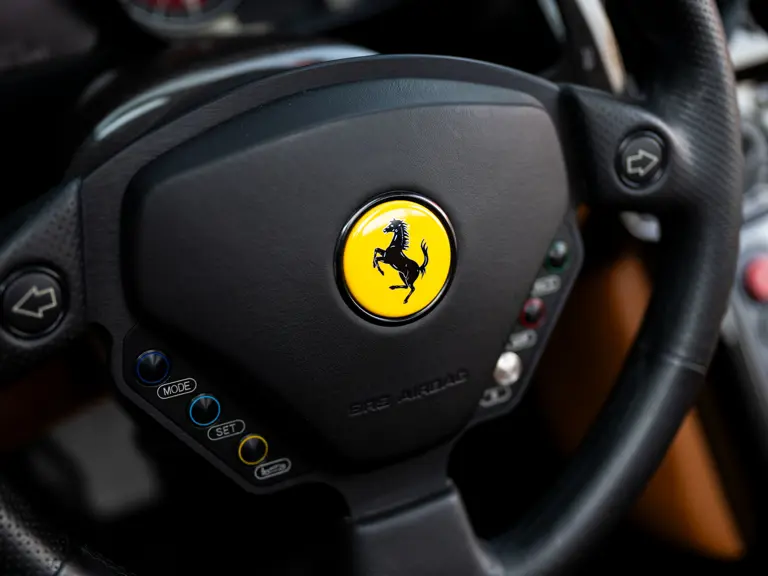
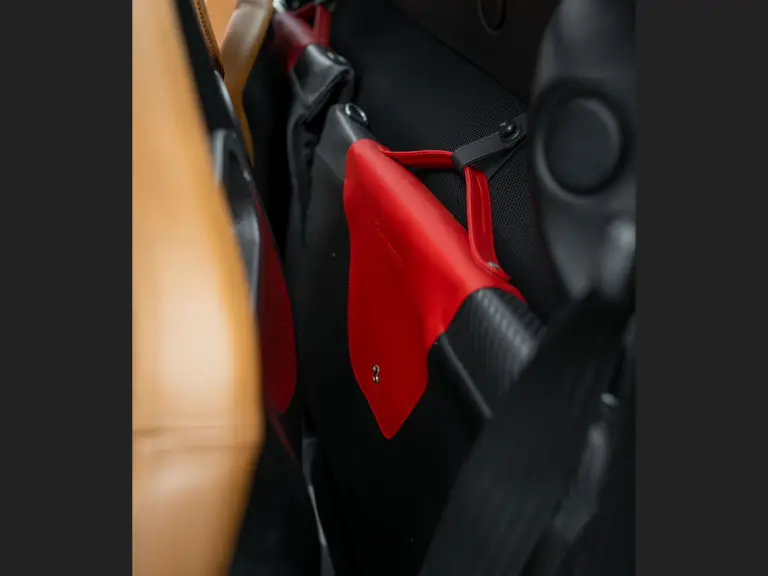
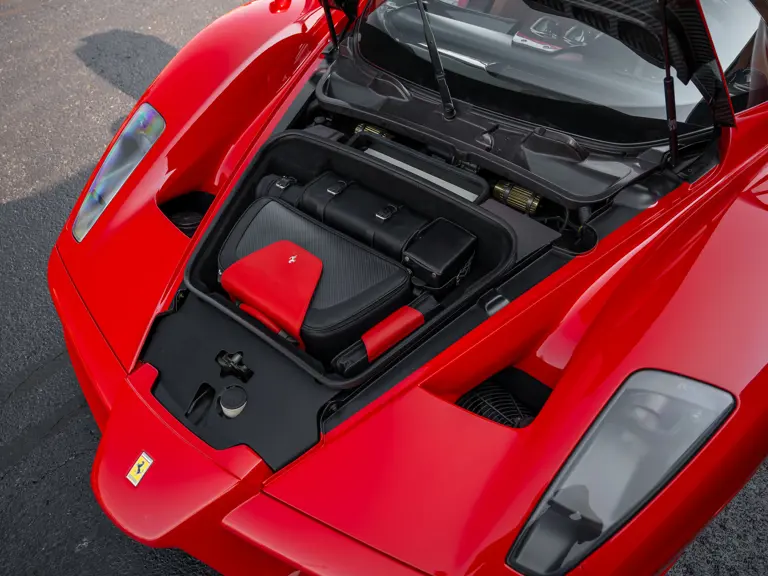
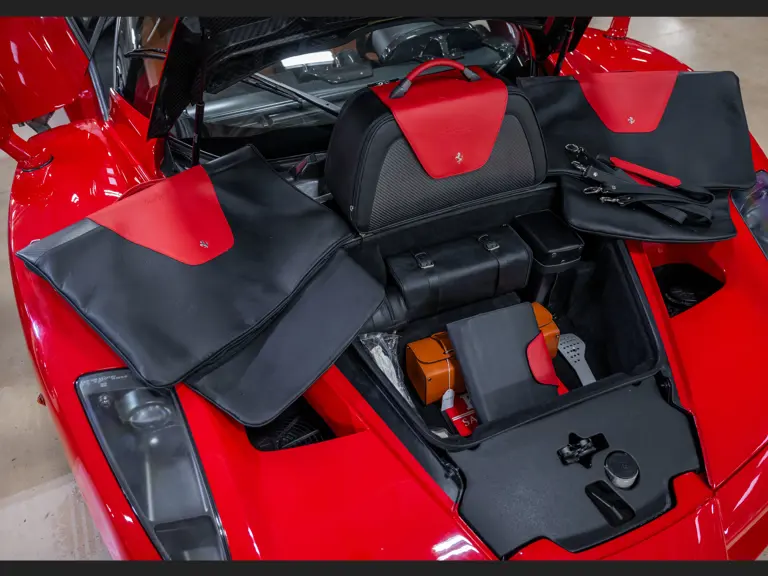
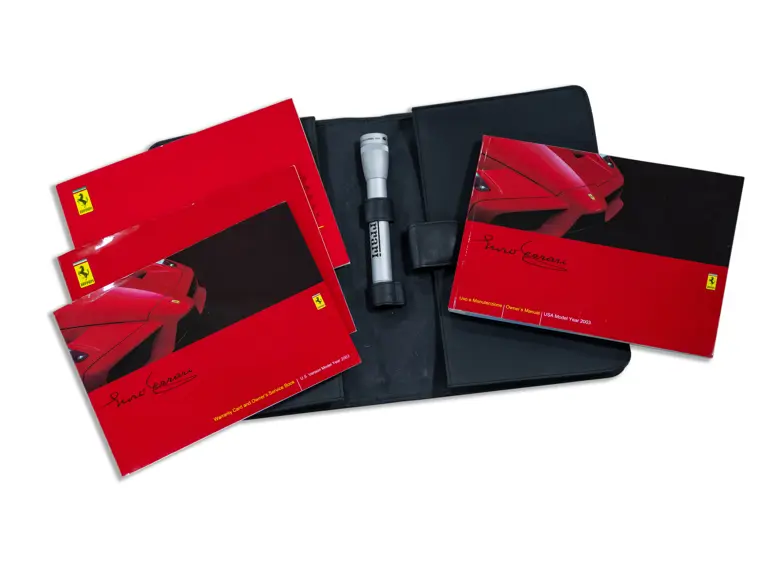


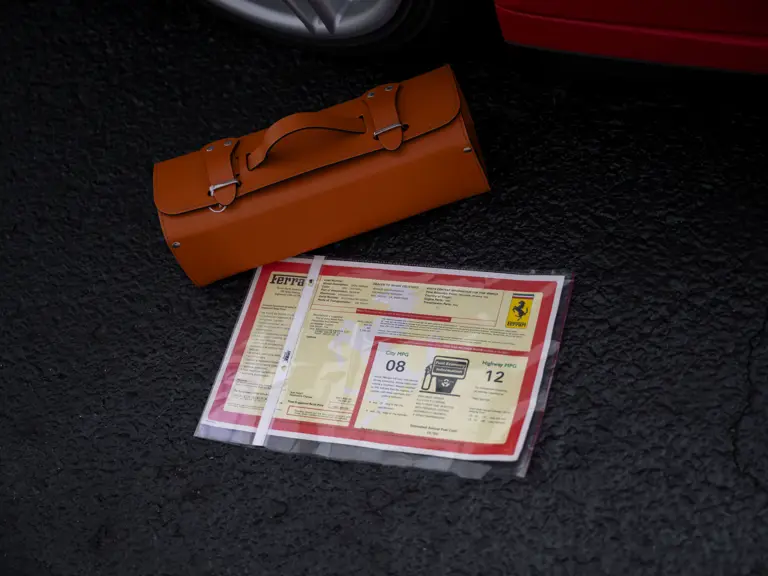
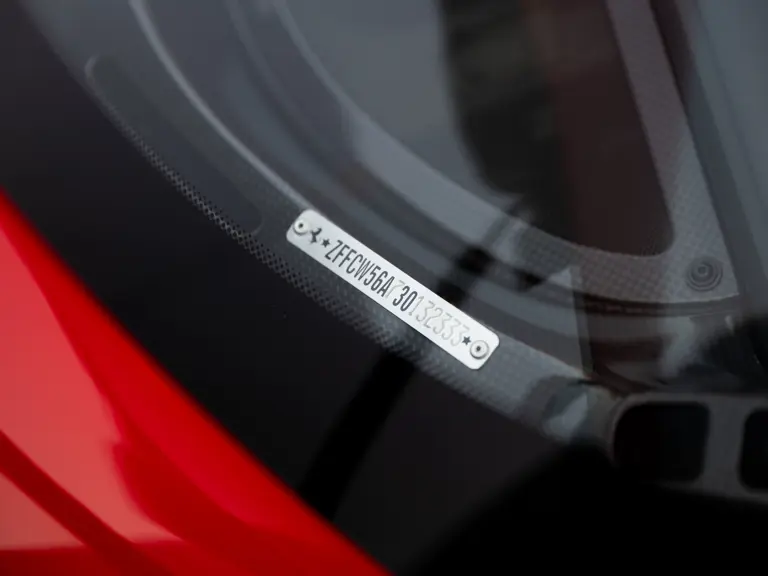
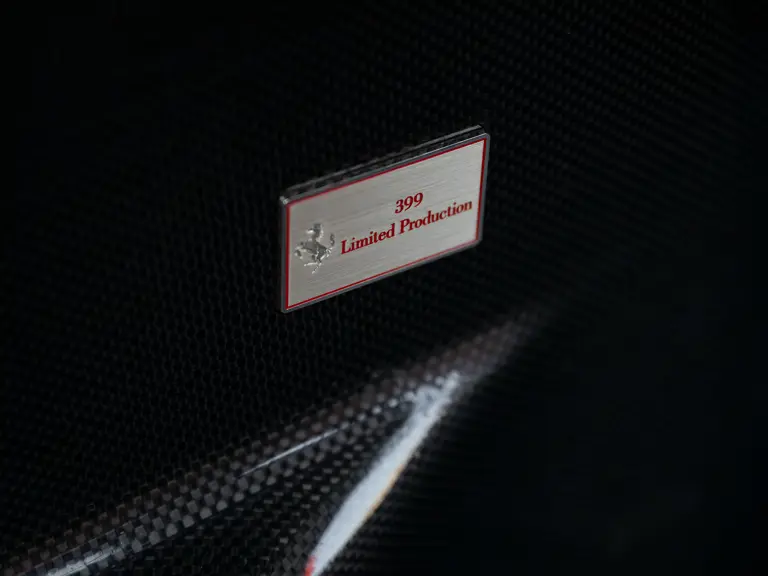
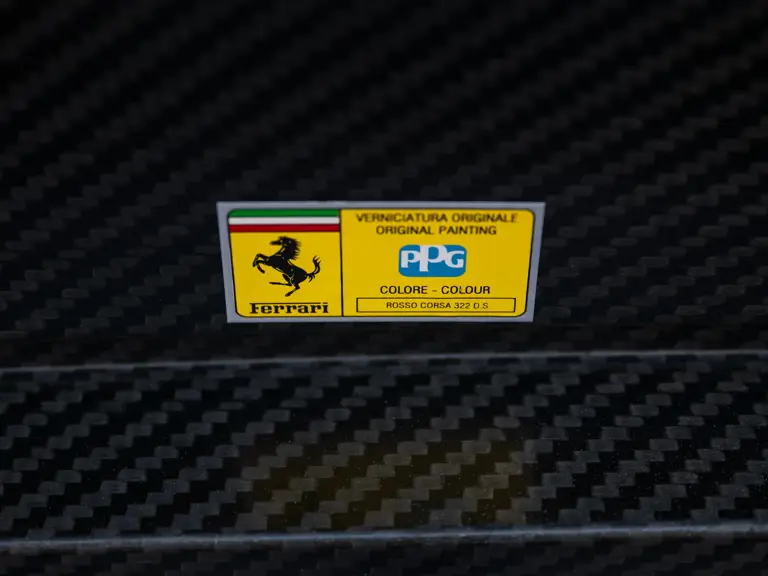
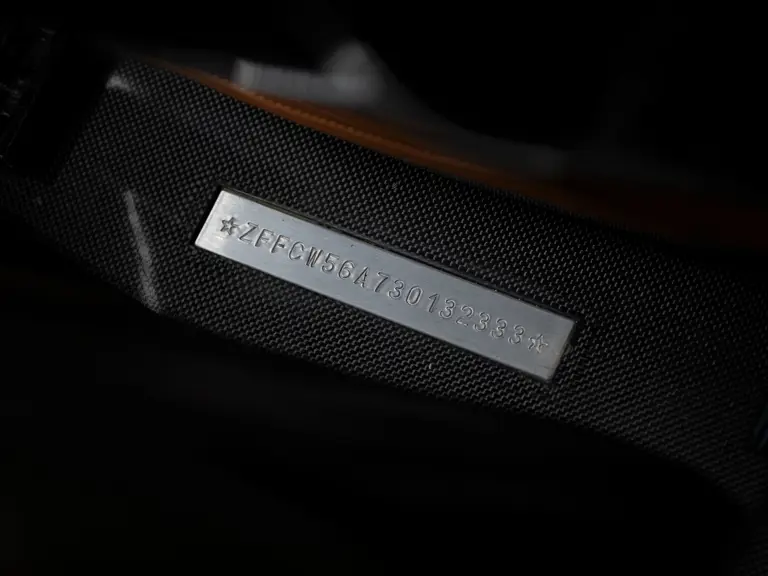
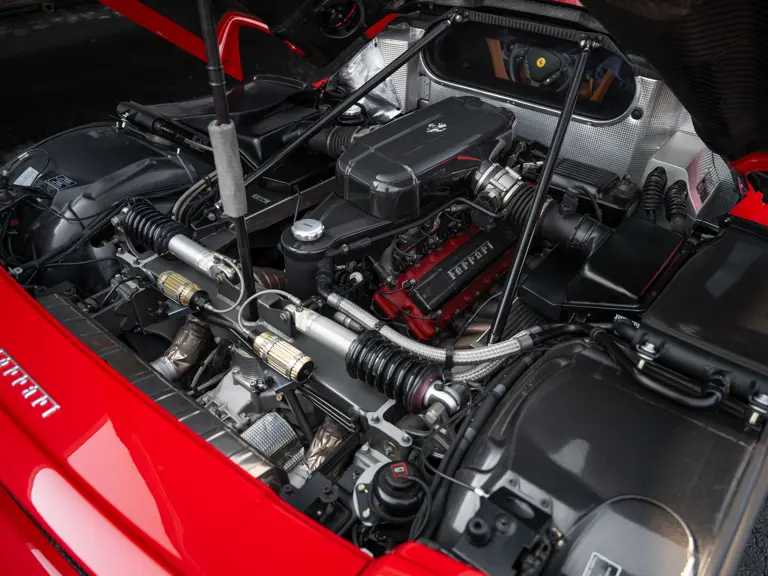
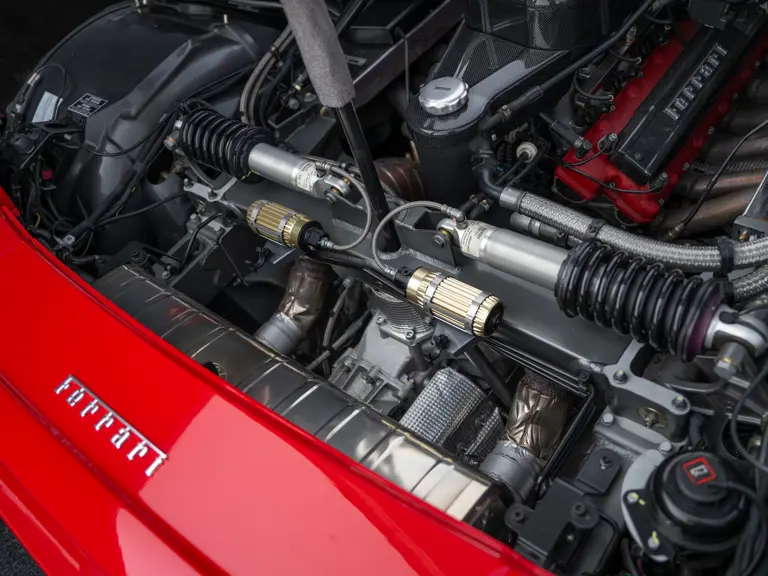
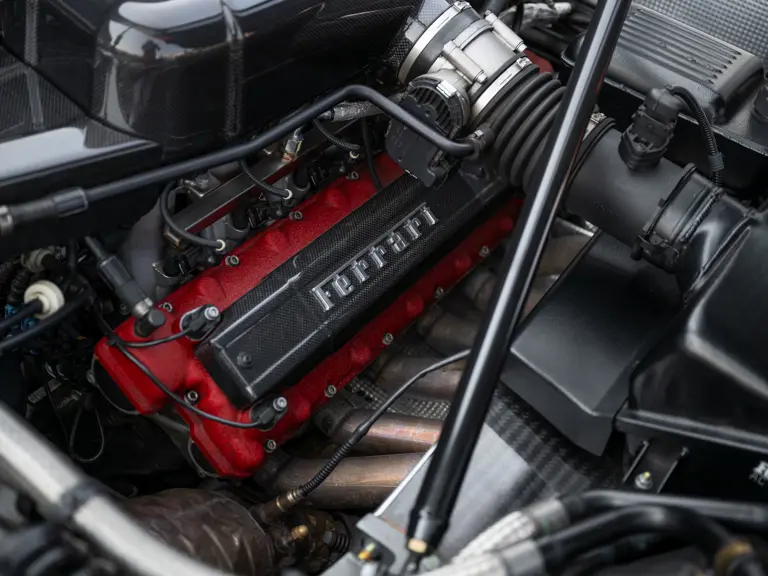
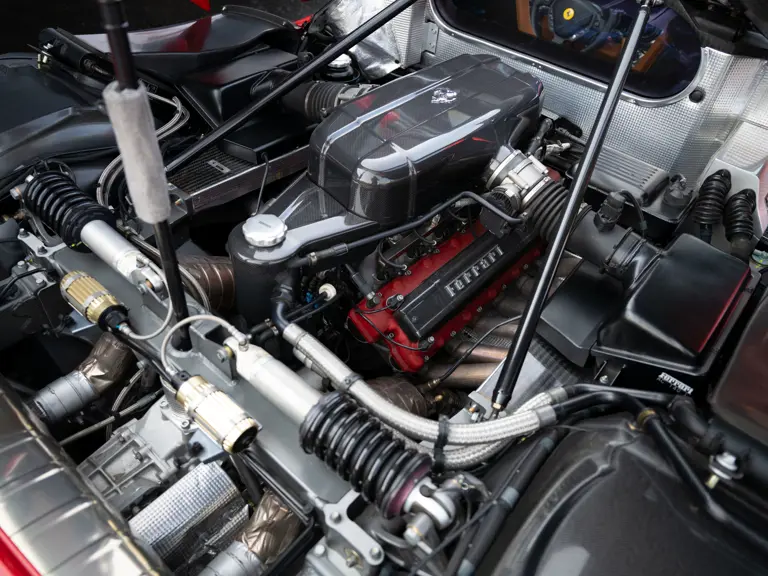
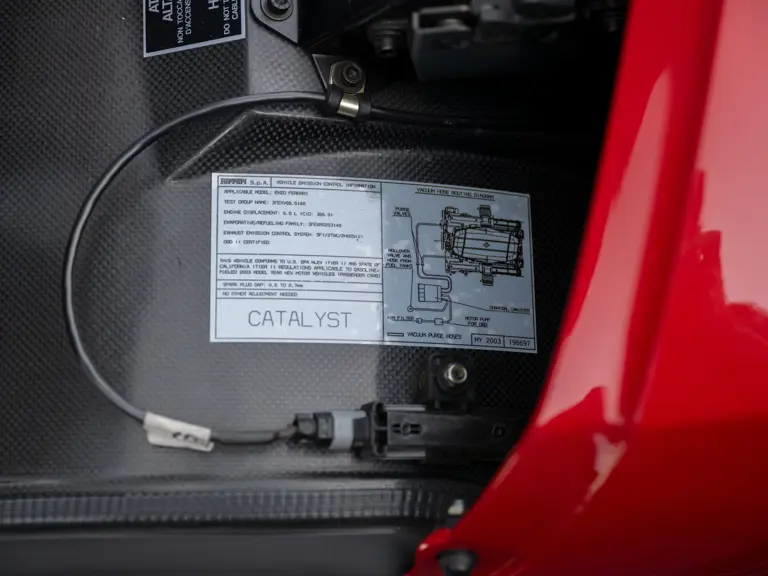
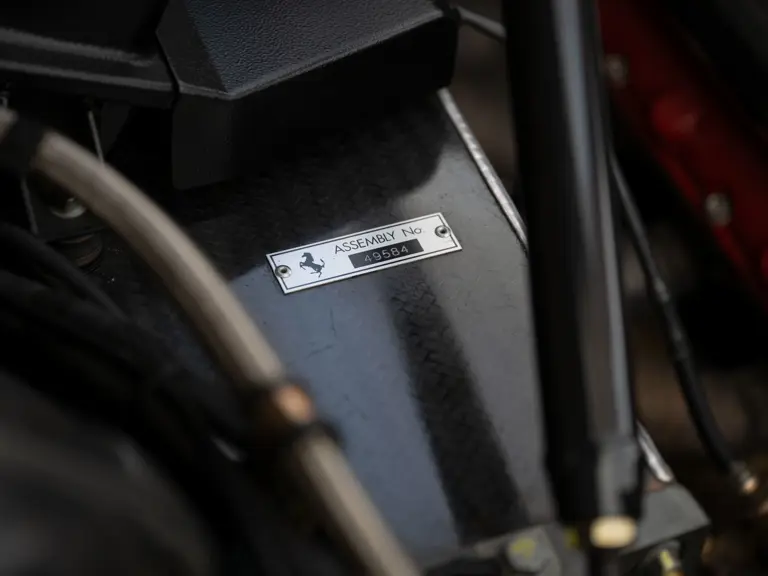

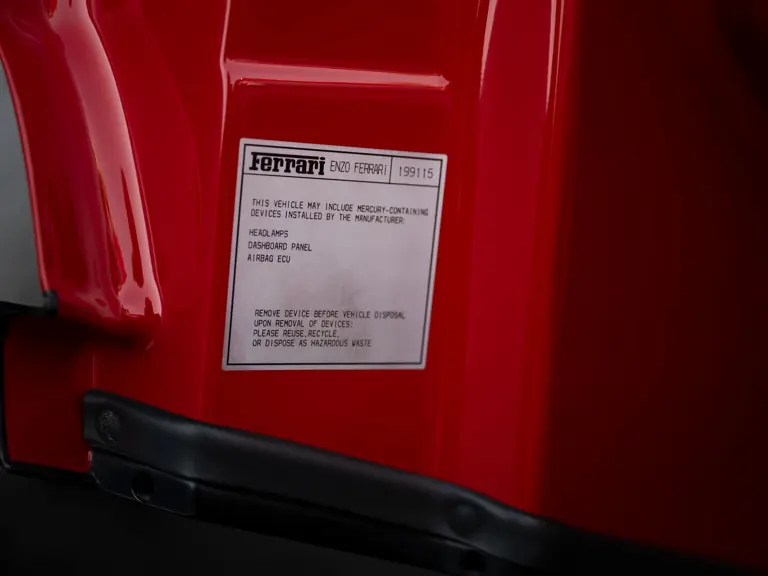
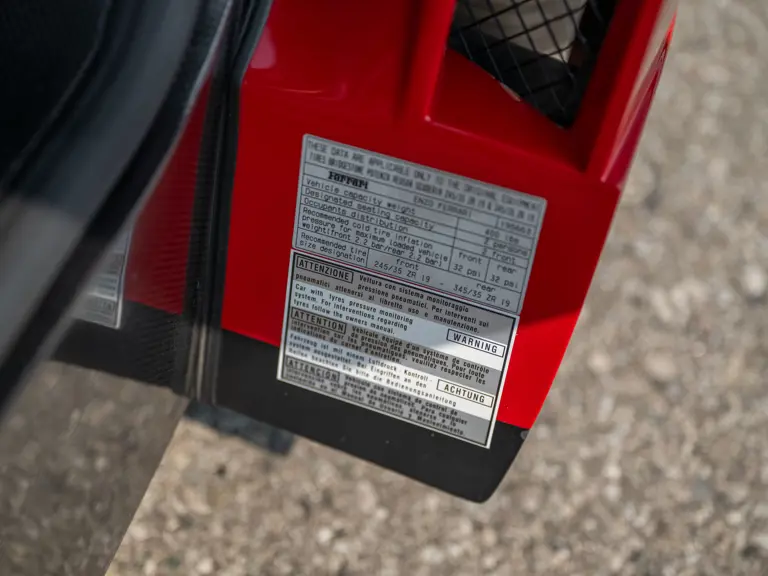
 | Coral Gables, Florida
| Coral Gables, Florida
